The shape of this dagger is unusual and would rather evoke a work from the second half of the 17th century
BLADE: It is obviously an old blade. It is hexagonal in shape, solid, and presents on each side remains of engraving partly erased by wear. At each end of a decoration of 3 thin zigzag grooves, one can very clearly distinguish A punch mark in the shape of a flower, and another consisting of a kind of elongated cross, the bottom of which is divided into 2 branches, and which is crossed out with 2 horizontal lines.
This mark in "cross with 2 branches and two legs" is very comparable to that which one finds on a sword preserved in the museum of the castle of York, dated 1612, of Germanic origin.
This York Castle sword also has a poorly legible marking which can be interpreted as a flower, but which wear makes it much less clear than on our example. (reference: in "1000 marks of European Blademakers" by Zygmunt S. Lenkiewicz)
The very regular geometry of the blade of this dagger and the homogeneous patina do not evoke a recut sword blade, but rather seem to correspond to a shape of origin.
Blade length = 34 cm, Width near the guard = 1.8 cm, thickness near the guard = 0.5 cm
GUARD: It is made of finely chiseled steel with plant motifs, and ends with two quillons.
In the center of the cross appears on each face a person's face but it is difficult to say if they are two slightly different representations of the same person or two different people.
POMMEL : It presents the same type of work as the guard, in chiseled steel with plant motifs, with on each side a man who seems dressed in an oriental costume, perhaps a biblical character...
GRIP : It is in wood covered with a twisted copper wire binding, of good quality. The "turk's heads" ferrules are present and in perfect condition.
In summary, we are here facing a dagger whose age of the blade is beyond doubt.
It is possible, of course, to think that the hilt could be posterior, as sometimes happens.
However, the steel at the level of the rivet of the pommel is old and oxidized, and on the other hand the decoration at the level of the guard and the pommel clearly show a punch engraving technique and not a cast iron molding: there is no has no bubbles or any trace of mold. So even if the shape of this dagger is a little unusual, it would be an exaggeration to conclude from the outset that it was reassembled, especially since the copper wire binding is particularly meticulously crafted.
This dagger is pleasant anyway and its price remains reasonable. Ref A2Y-2246



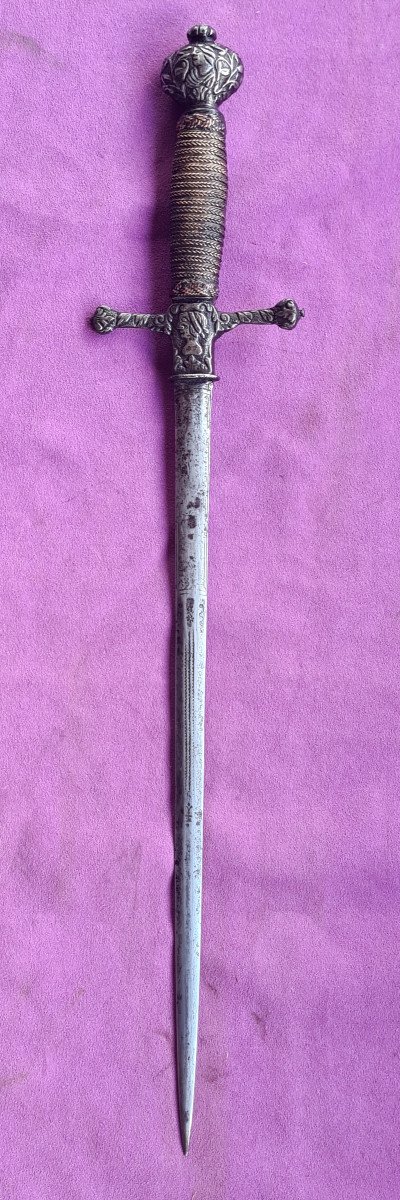

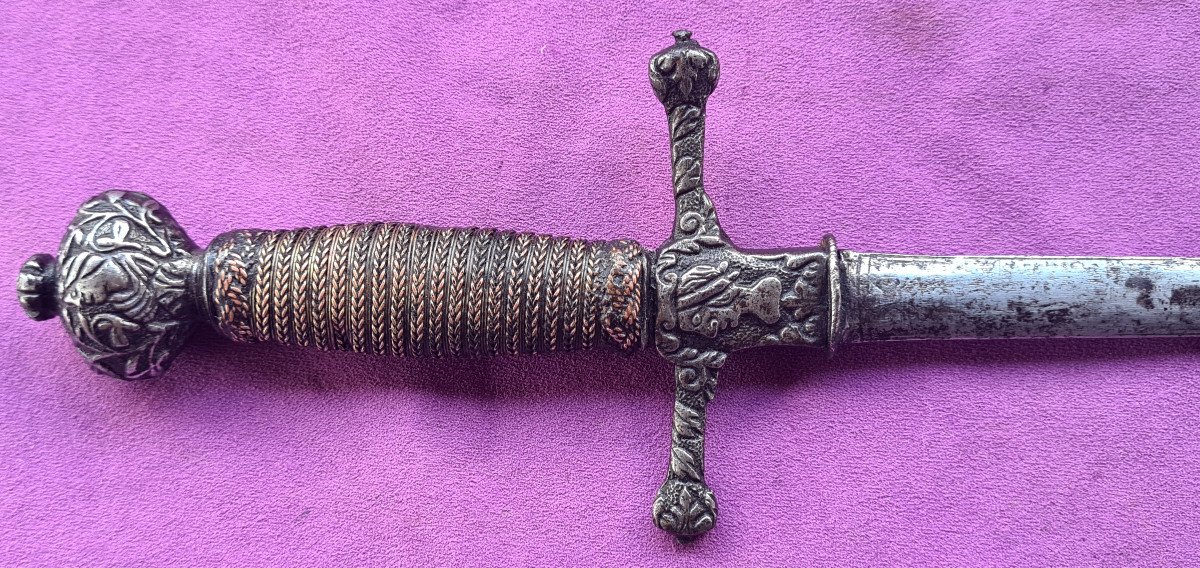
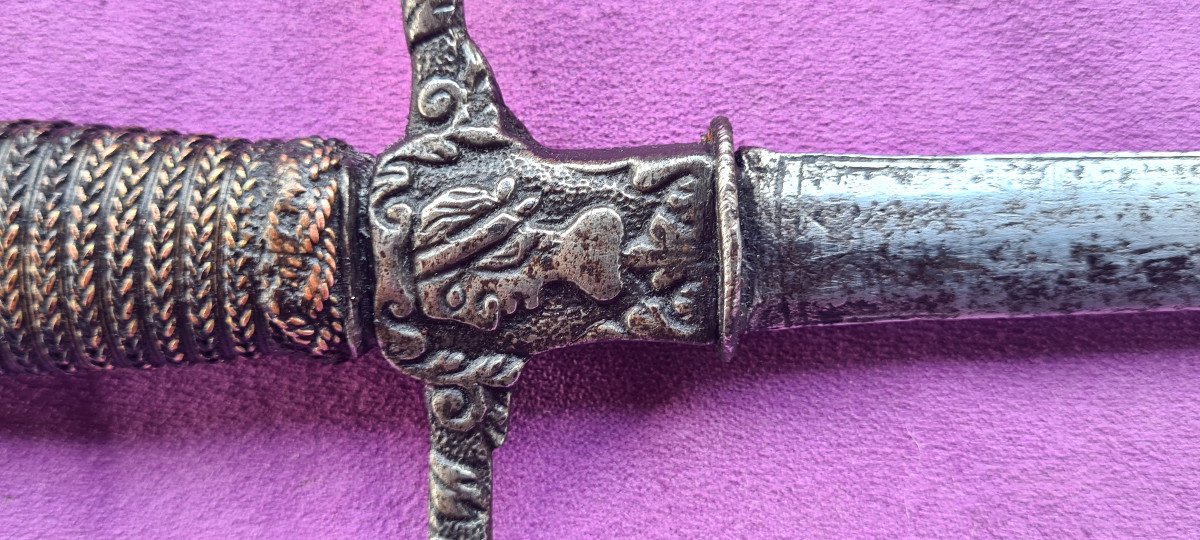
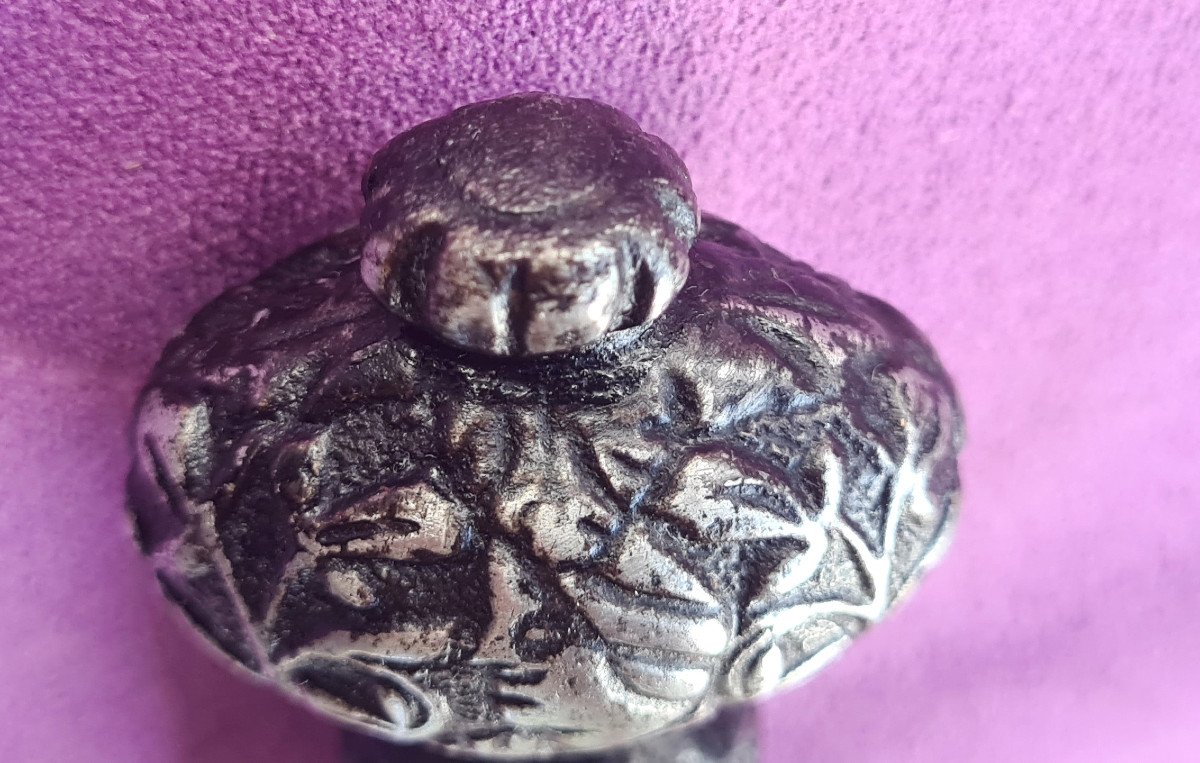

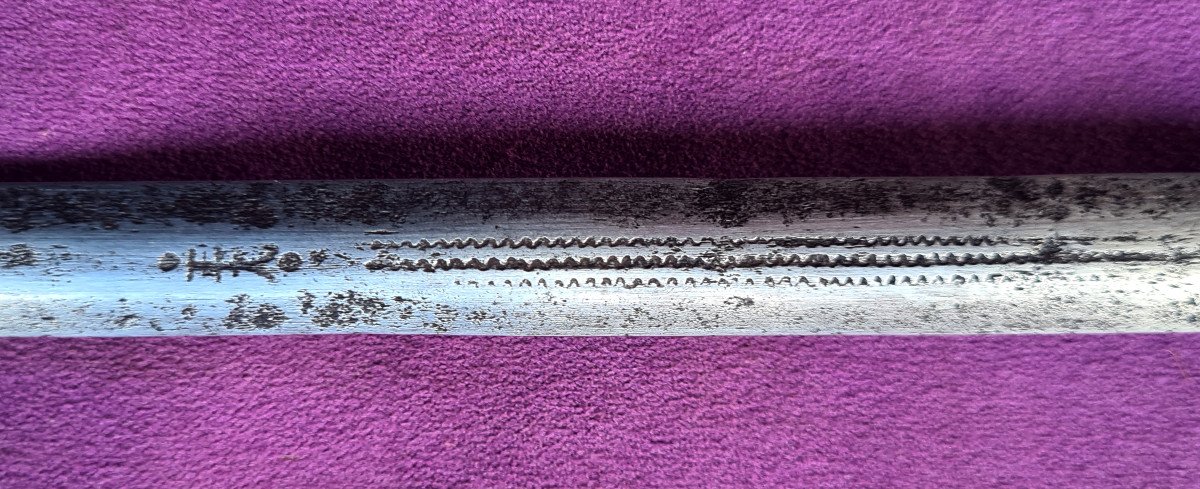
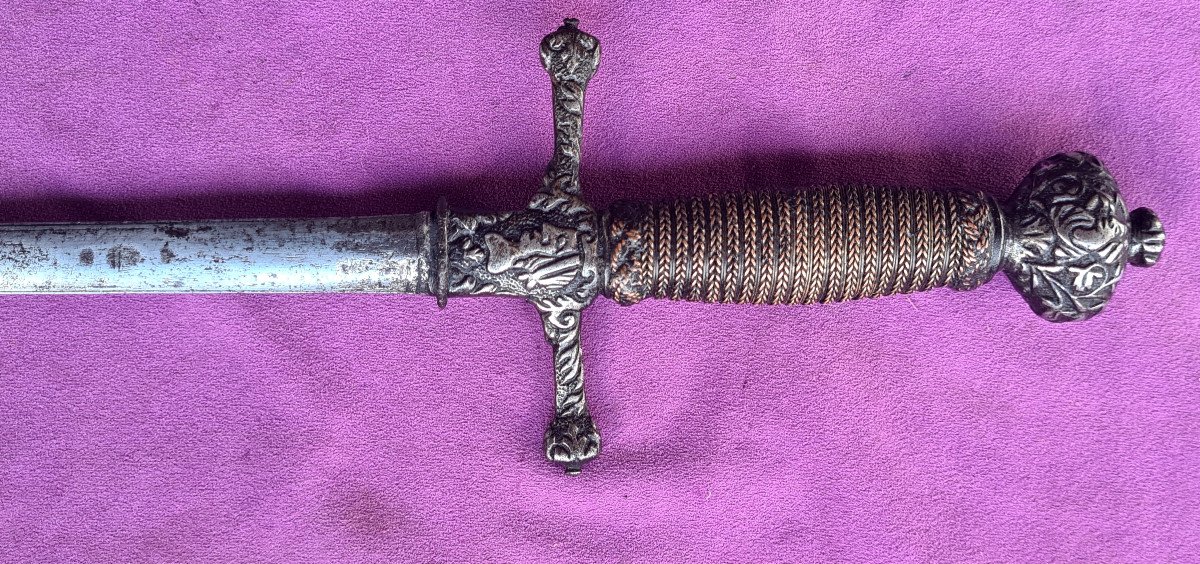
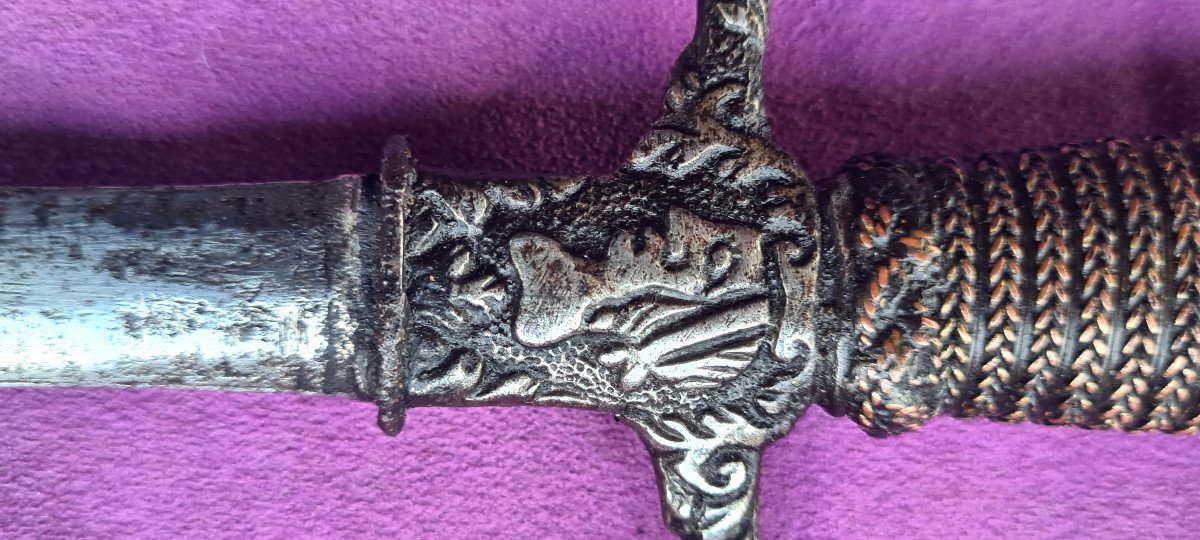
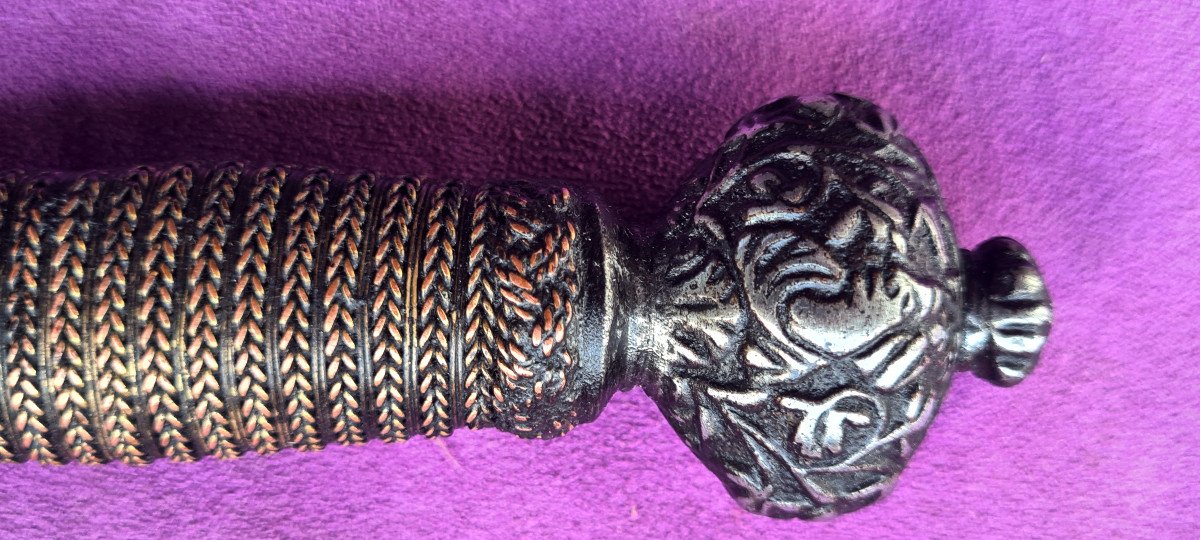
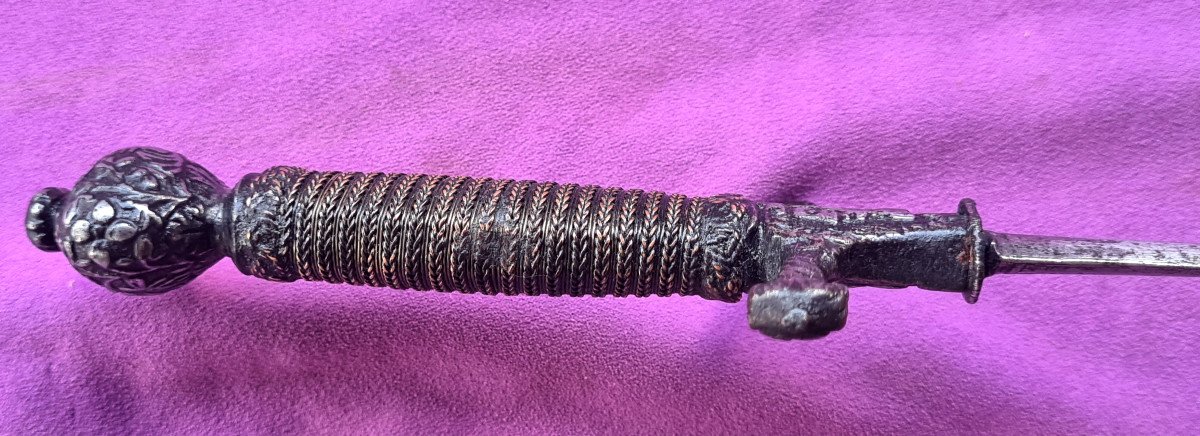



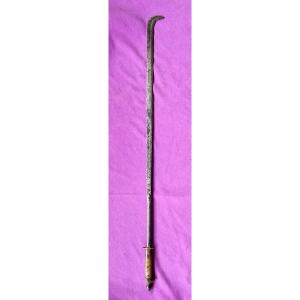

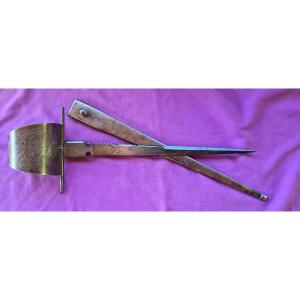





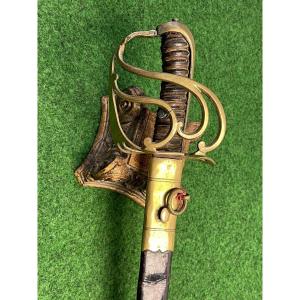



 Le Magazine de PROANTIC
Le Magazine de PROANTIC TRÉSORS Magazine
TRÉSORS Magazine Rivista Artiquariato
Rivista Artiquariato
